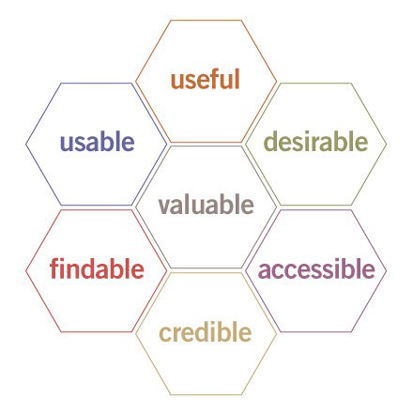What’s user experience (UX) got to do with conversions? Everything.
Great user experience is a means to an end. You don’t create awesome user experiences just to make somebody happy. You want it to lead to something—be it sticking around on your social network or buying your stuff.
Whenever users land on your website, they’re having an experience. The quality of their experience has a significant impact on their opinion (“Do I like it?”), the potential to earn a referral (“Do I tweet or talk about it?”) and, ultimately, conversions—will people do what we want them to do?
User experience matters a lot. More than most people realize. The best designed user experiences get out of the way and just help people get sh*t done. Less is more. If you have to explain it, you’ve already failed.
– Jason Goldberg, founder and CEO of Fab.com.
In Goldberg’s case, did their focus on user experience pay off? It sure seemed to. In just two years, they reached $150 million in annual sales.
Here’s a great animated video that explains how UX design delivers ROI:
Table of contents
Getting things right: What UX is and what it’s not
First of all, a user interface, or UI, is not the same thing as user experience, or UX. A car—its looks, dashboard, steering wheel—is the UI. Driving it is the UX.
So the interface directly contributes to the experience (e.g., a beautiful car interior makes a better experience sitting in one), but it’s not the experience itself.
Here’s a great infographic on the differences between UX, UI and more.
Visual beauty is important for websites, but visual design is only one step in the process. A beautiful website might make a great first impression, but if it has terrible usability—users can’t figure out what to do, forms on the site don’t quite work, error messages aren’t helpful, copy is vague—the overall experience will be quite bad.
Experience is also personal and subjective. It’s greatly affected by our past experiences, personal preferences, mood, and myriad other things.
User experience is not new—it wasn’t invented along with the Internet. Since the beginning of time, great designers have understood the importance of experience (Sistine Chapel, anyone?), and how the object of design would be used, in what context, and for what purpose. The abbreviation “UX,” sounds new, but none of this really is.
All in all, the user experience is a shared responsibility of all who contribute to and support a product—from the UI designer to customer support people.
The user experience honeycomb
Peter Morville and friends developed the user experience honeycomb to describe all the facets of UX:
Here’s what it all means:
- Useful. Is your product or website useful? The more useful, the better the experience.
- Usable. Ease of use. If it’s too complicated or confusing to use, you’ve already lost. Usability is measurable and necessary (but not sufficient).
- Desirable. Our quest for efficiency must be tempered by an appreciation for the power and value of image, identity, brand, and other elements of emotional design.
- Findable. We must strive to design navigable websites and locatable objects, so users can find what they need.
- Accessible. Just as our buildings have elevators and ramps, our websites should be accessible to people with disabilities (more than 10% of the population). Today, it’s good business and the ethical thing to do. Eventually, it will become the law.
- Credible. Websites need to be credible—know the design elements that influence whether users trust and believe what we tell them.
- Valuable. Our sites must deliver value to our end users. For non-profits, the user experience must advance the mission. With for-profits, it must contribute to the bottom line and improve customer satisfaction.
There are three ways to use this honeycomb:
- Have a meaningful conversation about improving and creating experiences.
- Assess your site through a specific lens and get specific ideas about what to improve.
- If you lack the time or budget to apply everything, do a single-facet makeover.
So how do you design a good experience?
As per Ryan Singer, you need to cut it down to three steps:
- Know what’s common to all people. Understand how the brain works, how people view websites, what makes people tick, how to boost readability, keep attention, come across as credible, and so on.
- Know what’s special about your users. How is your target group different from everybody else? What are they trying to get done by using your site or product? You need to understand their purpose for using your product, how they talk about it, their points of reference, and so on. This is called “domain knowledge.” If you don’t know this, you need to first identify your audience.
- Be empathetic to to your users. See it from the user’s perspective. If you know the job they want to get done, you can put yourself in their shoes and make the right decisions.
Some people say you can’t design “user experiences,” but you can design for user experiences. Bryan Zmijewski has this view:
The designers that work on Amazon.com don’t create the experience— they’re responsible for building the system, product and service that allowed those different experiences to happen. The designers work to understand how the user interacts with the website to create the most desirable and profitable experiences. We call that interaction design.
I hope we can all agree that user experience is a subjective feeling. People are different. The total experience of the user depends on many things, from how their day started to their socioeconomic status to personal preferences.
When we talk about designing an experience, we first need to be on the same page that design is problem-solving, not “making things pretty.” The goal of a design is to achieve a specific outcome, to solve a specific problem—like getting people to sign up for something or checking availability at a hotel.
Experience design is deciding on the experience you want people to have with a website or product—how someone feels, behaves, or thinks as they interact with it.
3 examples of great user experience
Let’s look a few sites that provide a really good user experience—and analyze them using the UX honeycomb.
1. Hipmunk
Our main philosophy is that we want you to spend as little time on our site as possible with the least amount of pain.
Hipmunk Co-founder Steve Huffman

- Useful? Very much so. The focus is on finding flights, sorted by hassle.
- Usable? Amazingly easy to use.
- Desirable? Fun, great design.
- Findable? The core functionality is in your face, can’t look past it.
- Credible? Their modern and uncluttered design helps to come across credible. No credibility blunders here.
- Valuable? Tons.
(Hipmonk, sadly, shut down in 2020, but only after it had been acquired several years before.)
2. Nest
Never before has a thermostat gotten people so excited. Founded in 2010, it took just four years to be acquired by Google—for the staggering sum of $3.2 billion.
The design of their site—as well as their product—played a huge role in their early success.
- Useful? A smooth flow to complete a purchase.
- Usable? Great usability..
- Desirable? Looks awesome! The photography and videos make it extremely desirable.
- Findable? Yes.
- Credible? High-profile mentions in the press right on the homepage and a kick-ass promo video. (Seeing is believing.)
- Valuable? Totally builds up the value Nest offers.
3. Foodily
Several years ago, the Webby Awards named Foodily the best food and beverage website. It won against tough competition, like Blenderbox and The New York Times.
- Useful? Very.
- Usable? Really good usability.
- Desirable? Superb design and photography
- Findable? Slick and easy to navigate.
- Credible? Social proof (33k likes) + constantly updated content + great design.
- Valuable? Very much so.
There are, of course, many other sites that grew really fast due to an awesome user experience—MADE, Airbnb, and Stripe to name a few.
How do you measure the effectiveness of user experience?
It’s simple. While some designers might disagree with me, I say it’s all about achieving the business objective. The user experience is a means to an end.
The simplest and most objective measure is the conversion rate. Do changes in the experience design boost or reduce conversions? (The action of conversion could be whatever—purchase, signup, quote request, repeat logins, etc.)
Conclusion
Great user experiences can lead to great results. However, it’s dangerous to play with the label “UX design” or a position called “UX designer.” This suggests that the only folks who need to worry about user experience are the designers, which is not true at all.
In fact, companies need to treat user experience no different than they treat increasing revenue, improving customer service, or strengthening corporate culture. It’s essential for sustainable success.
The future of your company can’t rely on a single designer. It needs to be the mindset and focus of the whole organization. So treat it accordingly—start discussions about the experience you provide every step of the way.









As always, great post Peep!
Thanks Michael!
I totally agree with your statement that design is problem solving, not ‘making things pretty’. Excellent article.
That’s a great conclusion Peep!
Great article :)
“Great user experiences can lead to great results. However, it’s dangerous to play with the label ‘UX design’ or a position called ‘UX designer’. This suggests that the only folks who need to worry about user experience are the designers – which is not true at all.”
This phrase sums up the whole UX – UI concept taken over by designers… Great post.